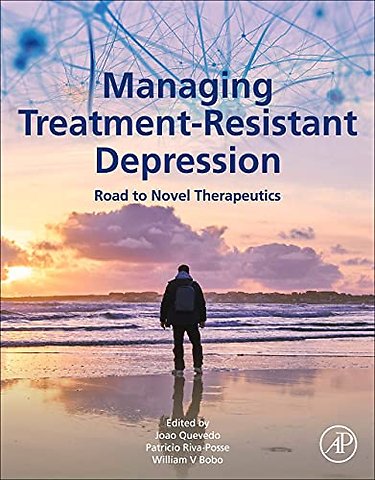1. Defining treatment-resistant depression, difficult-to-treat depression, and staging treatment intensity<br>2. Clinical and epidemiological predictors of treatment-resistant depression<br>3. The economic burden of treatment-resistant depression: Cost-of-illness perspective<br>4. The neurobiology of treatmentresistant depression<br>5. Modeling treatment-resistant depression in the preclinical setting<br>6. Treatment algorithms for treatment-resistant depression<br>7. Tools to aid precision treatments to prevent or manage treatmentresistant depression (TRD): Pharmacogenomics, machine learning, and artificial intelligence<br>8. Tricyclic antidepressants for treatment-resistant depression<br>9. Monoamine oxidase inhibitors for treatment-resistant depression<br>10. Switching antidepressants in patients with treatment-resistant depression<br>11. Adjunctive strategies for treatment-resistant depression<br>12. Combining antidepressants to address treatment-resistant depression<br>13. Ketamine/esketamine for treatment-resistant depression<br>14. Psychedelic agents for treatmentresistant depression<br>15. Inflammation and treatment resistance: Mechanisms and treatment implications<br>16. Opioid agents for treatmentresistant depression<br>17. Transcranial magnetic stimulation for treatment-resistant depression<br>18. tDCS for treatment-resistant depression<br>19. ECT for treatment-resistant depression<br>20. MST for treatment-resistant depression<br>21. VNS for treatment-resistant depression<br>22. Deep brain stimulation for treatment-resistant depression<br>23. Other neurosurgical interventions for treatment-resistant depression<br>24. Treatment-resistant psychotic depression<br>25. Evidence-based psychotherapy for treatment-resistant depression<br>26. Treatment-resistant bipolar depression<br>27. Treatment-resistant depression in child and adolescents<br>28. Treatment-resistant depression in geriatrics<br>29. Identification and management of anxious depression in patients with treatment-resistant depression<br>30. Managing treatment-resistant depression with comorbid personality disorders<br>31. Managing treatment-resistant depression with comorbid substance use disorders<br>32. Managing treatment-resistant depression in the setting of chronic pain<br>33. Inhaled gases for treatmentresistant major depression<br>34. Drugs under investigation for treatment-resistant depression<br>35. Chronotherapeutics for treatmentresistant depression<br>36. Managing treatment resistant depression in primary care settings<br>37. Treatment-resistant depression in pregnancy, the postpartum period, and transition to menopause<br>38. Lifestyle interventions for treatment-resistant depression<br>39. Managing the risk of suicide in people with treatment-resistant depression<br>40. Maintaining motivation and preserving the therapeutic alliance as tools to overcome treatmentresistant depression<br>
